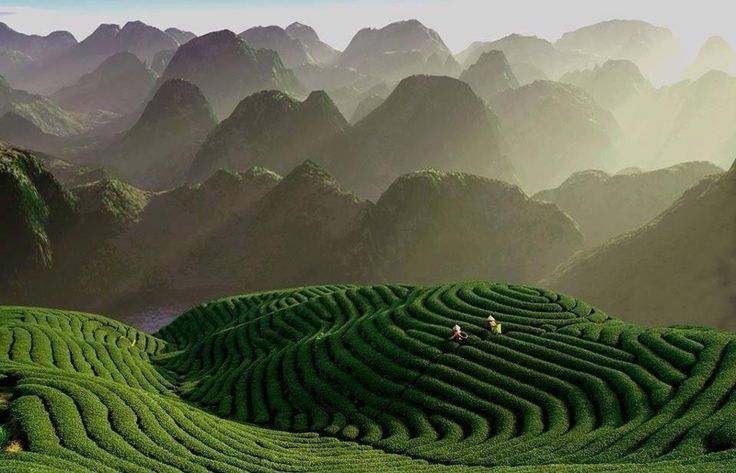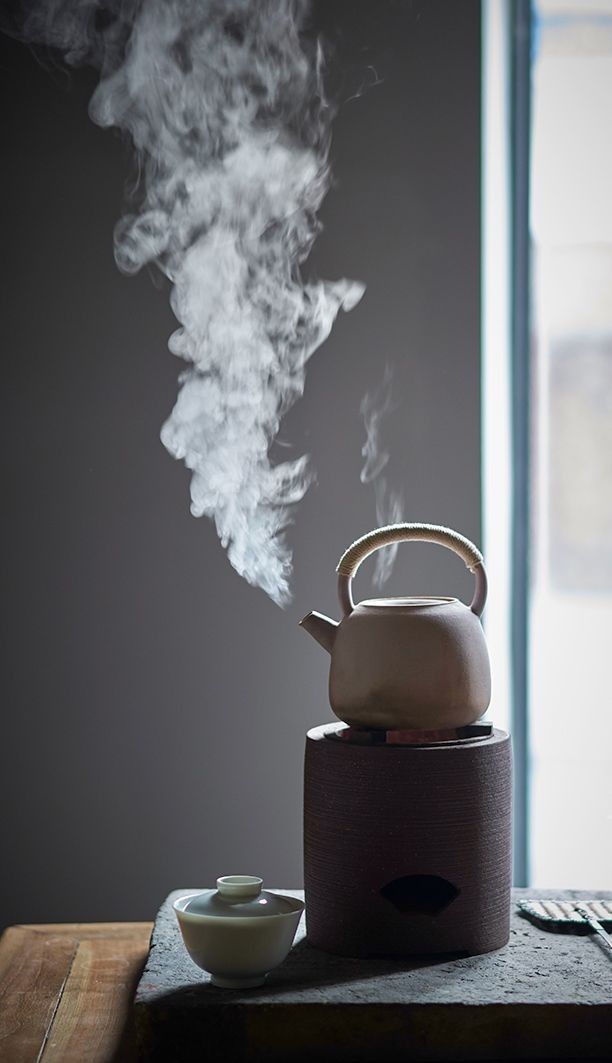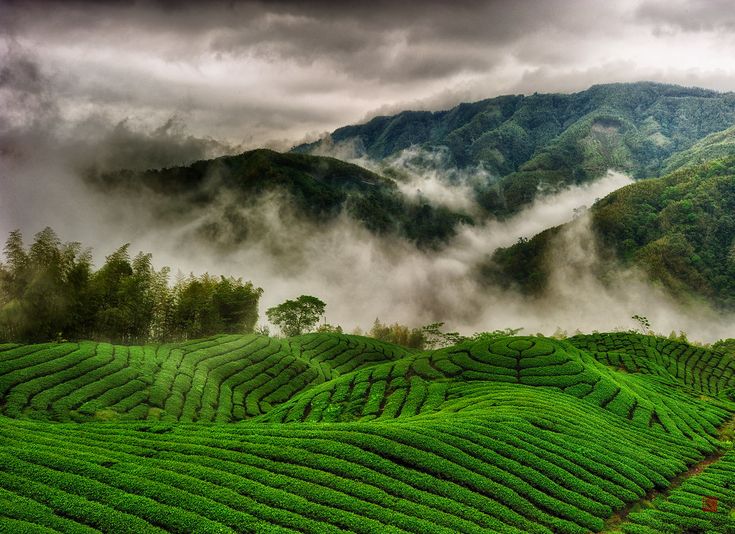A Brief History of Chinese Tea Culture
The history of Chinese tea culture is as rich and complex as tea drinking itself, dating back thousands of years to the mythical Emperor Shennong. Legend has it that while he was boiling water in his garden, a tea leaf accidentally fell into his pot, thus brewing the first cup of tea.
Since then, the Chinese have had a long-standing love affair with this aromatic beverage. Tea soon became an integral part of Chinese society, evolving from a medicinal beverage to a symbol of hospitality, respect, and harmony.

After centuries of cultivation and refinement, tea drinking developed into an art form in China that reflected spiritual beliefs, social customs, and aesthetic values. The complex rituals of brewing and drinking tea became a way to honor nature's gift and enhance connections between people.
Throughout Chinese dynasties, emperors and literati have extolled the virtues of tea not only for its health benefits, but also for its ability to inspire contemplation and creativity. From the elegant teahouses of Suzhou to the tranquil mountain temples where monks meditate over cups of aromatic tea, Chinese tea culture embodies a deep respect for tradition and mindfulness in daily life.
A Brief History of Chinese Tea Culture
The cultivation and consumption of tea have been closely tied to the fabric of society for thousands of years in Chinese history. The origins of Chinese tea culture date back to ancient times, with legend attributing the discovery of tea to Emperor Shen Nong, known as "Shennong". According to folklore, Emperor Shen Nong was a wise ruler and herbalist who accidentally tasted water boiled with tea leaves that had fallen from a tree branch. Impressed by the refreshing taste and invigorating effects of tea, he promoted tea as a medicinal beverage.
As the centuries passed, tea evolved from a medicinal elixir to a symbol of sophistication and elegance. During the Tang Dynasty (618-907 AD), tea drinking became an integral part of court etiquette and social customs among the nobility and literati.This period marked the beginning of formal tea ceremonies and elaborate rituals that elevated tea drinking to an art form. The Song Dynasty (960-1279 AD) further solidified the cultural significance of tea, promoting it as a symbol of harmony, respect, and contemplation.
Over time, Chinese tea culture has diversified into different styles and practices influenced by regional preferences, brewing techniques, and historical developments. From delicate green teas such as Longjing, prized for their refreshing aroma, to full-bodied black teas such as Qimen, revered for their rich flavor, each tea represents a unique facet of China’s rich and varied flavors and traditions.

Importance of Tea in Chinese Society
Tea holds a high status in Chinese society and is more than just a beverage; it is deeply embedded in social interactions, rituals, and daily life. In traditional Chinese philosophy, tea embodies the harmony between nature and human intervention—a balance that is reflected in every sip of tea that Chinese people take. Brewing and tasting tea is considered an art form that requires precision, patience, and focus.
Tea plays an important role in fostering connections among Chinese people—whether it’s a family gathering or a business meeting. Tea is a catalyst for fostering meaningful conversations, reconciliation in conflict, or simply sharing quiet moments amidst the chaos of life. Serving guests a well-brewed cup of tea is more than just a gesture; it shows respect for the guest while creating an atmosphere conducive to open communication.
Legendary Origin: Emperor Shennong and the Discovery of Tea
In Chinese history, Emperor Shennong is a revered figure who is credited with discovering tea. According to ancient mythology, Shennong was not only a ruler but also a wise man and herbalist who traveled the world seeking to improve the health and well-being of his people. Legend has it that one day while resting under a tea tree, some leaves fell into his boiling water.
Intrigued by the aroma and flavor of tea, he took a sip and discovered the invigorating properties we now know as tea. This chance encounter marked the transformation of tea from a simple beverage into an integral part of Chinese culture.
The Spread of Tea Planting in China
After its discovery by Emperor Shennong, tea began to spread throughout China during the Han Dynasty (206 BC - 220 AD). Originally grown for medicinal purposes, tea gradually became popular among scholars, monks, and nobles for its ability to promote mental clarity and spiritual awareness.
Tea tree cultivation techniques evolved over hundreds of years, with different regions perfecting unique cultivation methods based on their unique climate and soil conditions. From the misty mountains of Yunnan to the lush tea gardens of Zhejiang, every province contributes to China’s rich tea culture.
The Development of Tea Ceremonies and Rituals
As tea became more ingrained in Chinese society, people began to develop intricate rituals and etiquette around its drinking. Tea masters emerged to guide tea lovers on this sensory journey of tradition and mindfulness. These rituals are about more than just drinking tea; they are about cultivating connections with nature, oneself, and others.
From choosing the right teapot to pouring hot water at just the right temperature, each step is meaningful. Through these rituals, people find a moment of peace amidst the chaos of life; they find solace in a simple cup that holds centuries of history, culture, and wisdom.
Green Tea: Embracing the Natural Elixir

Varieties: Green tea is a treasure trove of flavors, with the most famous varieties being Longjing and Biluochun. Longjing is produced in Hangzhou and has a nutty aroma and a fresh, grassy flavor. In contrast, Biluochun from Suzhou is enchanting with its delicate sweetness and floral notes. Processing Methods: The production of green tea involves delicate steps to preserve its natural freshness. After picking, the leaves are withered to reduce the moisture content and then either roasted or steamed to stop oxidation.
Before drying, curling and shaping the tea leaves can further enhance their flavor. Health Benefits: Green tea is praised for its numerous health benefits. It is rich in antioxidants such as catechins and EGCG, which help boost metabolism, reduce inflammation, and promote heart health. Its calming properties help reduce stress while enhancing cognitive function and supporting overall health.
Black Tea: Uncovering the Deep Complexity
Varieties: Black tea has a range of fascinating varieties, such as the Enlightenment Black Tea from Anhui Province and the Dianhong Black Tea from Yunnan. The Enlightenment Black Tea delights with its rich smoky aroma and malty flavor, while the Dianhong fascinates with its sweet honey flavor and rich flavor.
Oxidation Process: Black tea is fully oxidized during processing, giving it a unique color and rich flavor. Enzymatic browning converts the leaf's compounds into complex flavonoids, which, depending on the degree of oxidation, form the rich flavor profile of black tea, ranging from refreshing to malty.
Flavor profile: The flavor of black tea varies from refreshing and astringent to smooth and delicate, depending on factors such as terroir conditions and the processing techniques used by craftsmen. Caramel, chocolate, fruity, and even floral notes can be found in different black teas, bringing a pleasant sensory experience to lovers.
Oolong tea: a dance of aroma and taste
Varieties: Oolong tea presents fascinating flavors, and the most highly regarded varieties include Tieguanyin from Fujian and Dahongpao from Wuyi Mountain. Tieguanyin fascinates with its floral fragrance and creamy texture, while Dahongpao fascinates with its roasted aroma and complex layers.
Oxidation level: Oolong tea has a degree of oxidation between green tea and black tea. Depending on the different degrees of oxidation applied by skilled craftsmen during the production process, oolong tea has a variety of flavors, ranging from light floral notes to dark roasted flavors. Aroma and Taste Notes: The unique semi-oxidized nature gives oolong tea a distinctive aroma, ranging from floral notes like orchid or lily to fruity notes like peach or citrus, and subtle flavors like honey sweetness or earthy undertones, providing a sophisticated sensory journey for discerning taste buds.
Tea Producing Regions in China

Explore the Diversity of Chinese Tea Plantations
China is a country rich in tea, and each producing region has its unique terroir that influences the flavor and characteristics of the tea. Yunnan, known as the birthplace of tea, has ancient tea trees that produce exquisite Pu'er tea.
The Yunwu Mountains in Fujian are famous for producing delicate white teas and oolong teas with floral notes. Zhejiang Province, with its lush vegetation and mild climate, is famous for producing green teas such as Longjing, which is known for its refreshing taste and chestnut aroma.
The Impact of Terroir on Flavor
Terroir plays a vital role in shaping the flavor of Chinese tea. Factors such as soil composition, altitude, climate, and sunshine all affect the unique taste and aroma of each tea.
Yunnan’s mineral-rich soil gives Pu’er tea its distinctive earthy flavor, while Fujian’s foggy weather lends white tea its light sweetness. Zhejiang’s mountainous terrain creates ideal conditions for growing green teas with a refreshing, vegetal flavor.
